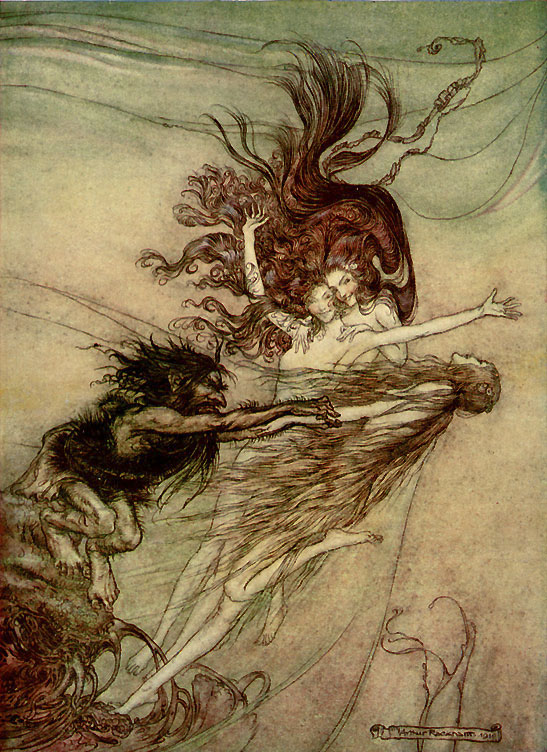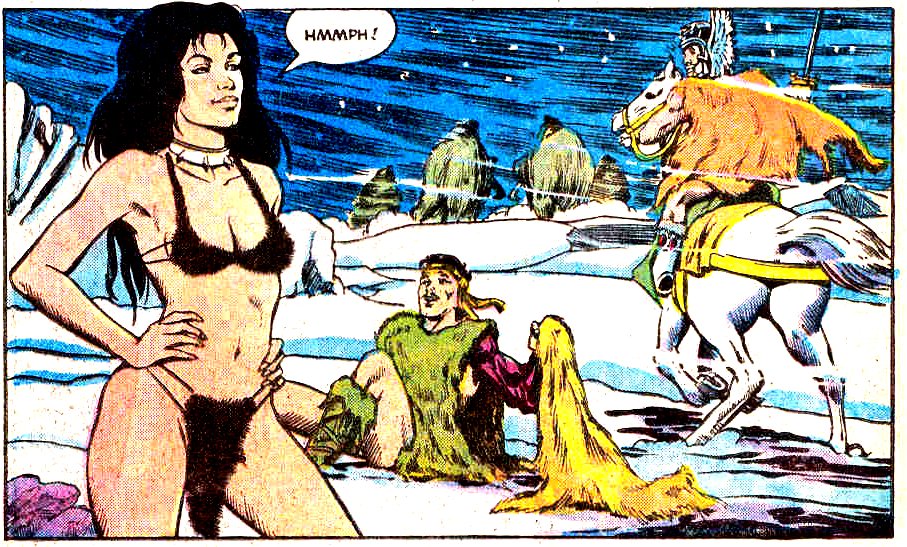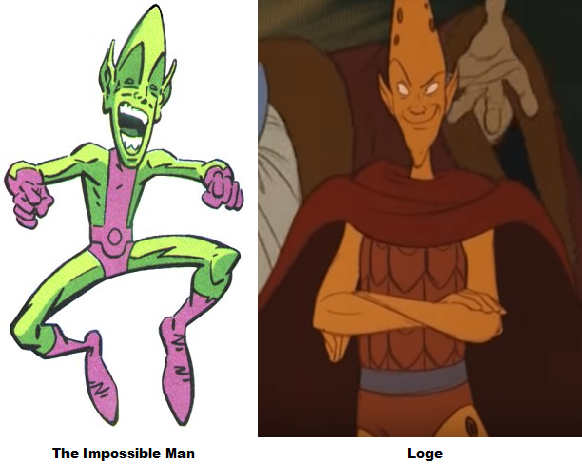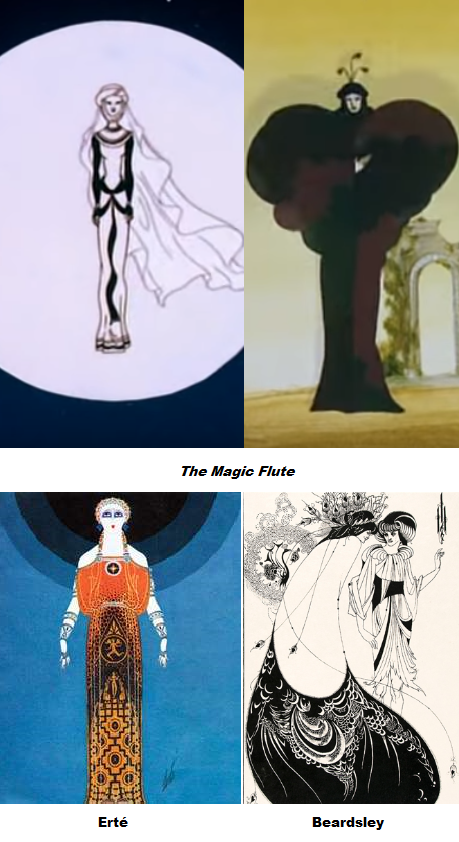Just as, in the previous story, a daughter’s abduction led to destructive revenge by her mother, so in Verdi’s Rigoletto (“Operavox,” 1995), based on Victor Hugo’s play Le Roi s’amuse, a daughter’s abduction leads to destructive revenge by her father – though in this case the daughter ends up in the realm of the dead permanently rather than on a seasonal basis. (This version muddies the plot a bit, for no clear reason.)
Tag Archives | Middelboe
Middelboe Chronicles, Part 11: Persephone
In yesterday’s installment, Das Rheingold, the result of the giants’ abducting Freya with her apples of youth is that old age begins to fall upon the Asgardian gods, and cannot be reversed until she is returned. (Wagner is here mashing together two different legends, that of Freya’s betrothal to the giant with that of Loki’s abduction of Idunn with her apples of youth.) Likewise in the Greek myth of “Persephone” (2002; “Animated Tales of the World”) the result of the god of the underworld’s abducting the daughter of the goddess of fertility is that winter falls upon the world, and likewise cannot be reversed until she is returned.
This version of the story incidentally makes Persephone rather more cheerful about her abduction than she is in the original myth, where she refrained from eating as long as possible in order not to be trapped in Hades’ realm, and succumbed to eating the pomegranate seeds only out of hunger.
Middelboe Chronicles, Part 10: Rhinegold
One Ring for the Dwarf Lord in his hall of stone ….
As different as they seem, Oberon/Auberon, the king of the fairies in British and French folklore (and thus in Shakespeare’s Midsummer Night’s Dream), originates as a variation on Alberich, the dwarf king of Germanic folklore, whom Richard Wagner in turn combined with the Icelandic dwarf Andvari in his operatic mashup of Germanic and Icelandic versions of Norse mythology together with the Rhinemaiden legend, the Hesperides legend, and Feuerbachian and Schopenhauerian philosophy, in his Ring Cycle which kicks off with Das Rheingold, here adapted in 1995 as part of the “Operavox” series:
The visual portrayal of the Rhinemaidens may be influenced by Arthur Rackham’s:

Freya, by contrast, looks as though she stepped out of a 1970s sword-and-sorcery comic:

And Loge (Wagner’s mash-up of Loki the trickster-god with Logi the fire-god) strongly resembles the Marvel Comics trickster character, the Impossible Man:

Middelboe Chronicles, Part 9: A Midsummer Night’s Dream
The location of A Midsummer Night’s Dream (from “Shakespeare: The Animated Tales,” 1992) is purportedly ancient Greece (specifically Athens, during the preparations for the wedding of Theseus and Hippolyta), but the fairies who populate the nearby woods are all drawn from the Celtic and Germanic folklore of northern Europe, which makes this a natural segue from the tale of Fionn mac Cumhaill; and the hostility between the estranged king and queen of the fairies and their struggle for control over the Indian prince resembles the hostility between Mozart’s Sarastro and the Queen of the Night, and their struggle for control over Pamina, from before that.
The artistic style for this one reminds me a bit of Gahan Wilson.
Middelboe Chronicles, Part 8: Fionn and the Fianna
Passing from The Magic Flute to Fionn and the Fianna (2001; from “Animated Tales of the World”), but continuing the theme of magical quests, magical tests, and magical gifts – this adaptation of the Irish saga of Fionn mac Cumhaill (a.k.a. Finn MacCool).
Several themes we’ve seen in other stories recur here, such as the chess-playing challenge (The Green Man of Knowledge) and the monster-periodically-attacking-the-royal-hall (Beowulf). And the fact that the monster can be killed only in a doorway (i.e., neither indoors nor outdoors) is another example of the magical-loophole stories I discussed last week.
Middelboe Chronicles, Part 7: The Magic Flute
From a man swallowed by a giant fish to a man nearly swallowed by a giant snake – Mozart’s Magic Flute (1995), part of the Middelboeverse “Operavox” series. The animation is batshit crazy – but no crazier, really, than the loony plot of the opera it’s adapting (complete with sexist and racist bullshit, Masonic rituals, and characters dressed as birds for no obvious reason).
The stylised, elongated figures seem to be influenced by such art nouveau and art deco artists as Erté and Aubrey Beardsley, with perhaps some influence from the likes of Ferenc Helbing, Gustav Klimt, and Jean Giraud as well – and maybe even a touch of the art from “The Yellow Submarine” and Monty Python?

The dancing hippos and crocodiles are of course a nod to Disney’s Fantasia:
